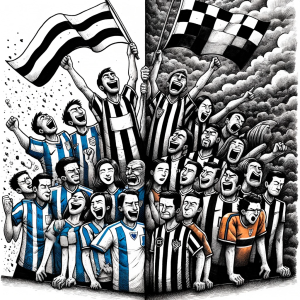
Soccer Salaries: Does Beauty Matter?
The labor market’s fascination with behavioral biases has gained substantial academic attention over the past decade. One particularly intriguing aspect is the role of physical attractiveness in salary determination. This blog delves into recent research exploring the “beauty premium” in professional soccer, examining whether good looks can influence player salaries. This study’s findings have significant implications for soccer coaching, player development, and the broader understanding of labor market dynamics.
The Research: Beauty and Salaries in Soccer
In recent years, economists have turned their attention to professional sports as a fertile ground for studying salary determination. Soccer, with its clear performance metrics and extensive data, provides an ideal context for this analysis. The study we explore here focuses on Major League Soccer (MLS) players, examining whether physical attractiveness impacts their salaries and whether this effect varies across different pay levels.
Research Questions:
- Do professional soccer players benefit from a “beauty premium” in their salaries?
- Is this premium consistent across low- and high-paid players?
To answer these questions, the researchers analyzed data from over 370 players across 12 years, employing a quantile regression model to uncover heterogeneous effects at different salary levels.
Understanding the Beauty Premium
The concept of a beauty premium is not new. Previous studies have shown that physical attractiveness can influence earnings in various industries, from law to education. In sports, the link between attractiveness and salaries has been less explored, making this research particularly groundbreaking.
Economists propose several theories to explain why beauty might pay off:
- Taste-based discrimination: Employers and fans may have a preference for attractive individuals, leading to higher salaries.
- Latent characteristics: Attractiveness might be associated with traits like confidence, charisma, and productivity.
- Marketability: Attractive players may draw more media attention, sponsorships, and fan engagement, boosting their value to teams.
Methodology: Measuring Attractiveness and Analyzing Salaries
To quantify attractiveness, the researchers used facial symmetry as a proxy. They employed the Microsoft Face API to analyze players’ profile photos, calculating a symmetry score for each player. Facial symmetry has been widely used in academic research as a reliable measure of attractiveness.
The study then used this data to investigate the relationship between attractiveness and player salaries. The researchers controlled for various factors, including age, performance metrics (goals and assists per 90 minutes), and designation as a star player (which often exempts them from salary cap regulations).
Key Findings: Beauty Pays, Especially for Star Players
The analysis revealed several key insights:
- Beauty Premium Exists: Attractive players tend to earn higher base salaries, independent of their on-field performance.
- Amplified Effect for Star Players: The beauty premium is most pronounced among star players who are not subject to salary caps. These players benefit significantly from their looks, suggesting that marketability and public appeal play a substantial role in their compensation.
- Heterogeneous Effects: The beauty premium varies across the salary distribution. It is particularly strong in the upper echelons, where star players reside. For lower-paid players, performance remains the primary determinant of salary.
Implications for Soccer Coaching and Player Development
These findings have profound implications for soccer coaching and player development:
- Marketability Training: Coaches and agents might consider emphasizing media training and personal branding for players, leveraging attractiveness to enhance their market value.
- Holistic Development: Developing well-rounded players who excel both on and off the field can maximize their earning potential.
- Addressing Bias: Awareness of the beauty premium can help teams and leagues address potential biases in salary negotiations and ensure fair compensation based on performance and merit.
Encouraging Reader Engagement
We’d love to hear your thoughts on this fascinating intersection of beauty and soccer. Do you think physical attractiveness should influence player salaries? How can teams ensure fair compensation practices? Share your opinions in the comments below!
Conclusion
This study illuminates the significant role of physical attractiveness in salary determination within professional soccer. The beauty premium, especially among star players, underscores the complex interplay between marketability and performance in shaping player compensation. By integrating these insights into coaching and player development strategies, the soccer industry can better navigate the nuanced dynamics of player remuneration.
Step into the forefront of soccer innovation with ‘This Week in Soccer’.
Our newsletter is more than just words; it’s an interactive journey through the complexities of soccer analytics and strategy. Whether you’re a coach, educator, or enthusiast, our content is designed to spark curiosity and enhance your understanding. Subscribe today and be part of a community pushing the boundaries of soccer education.



